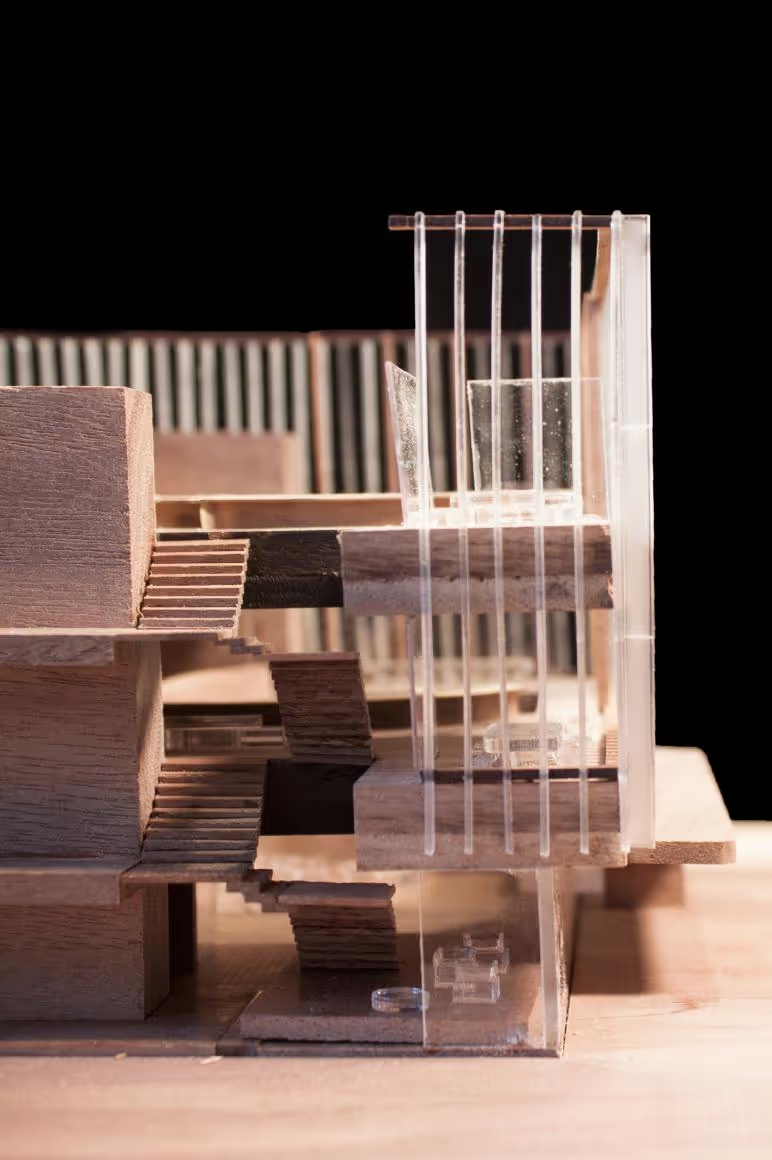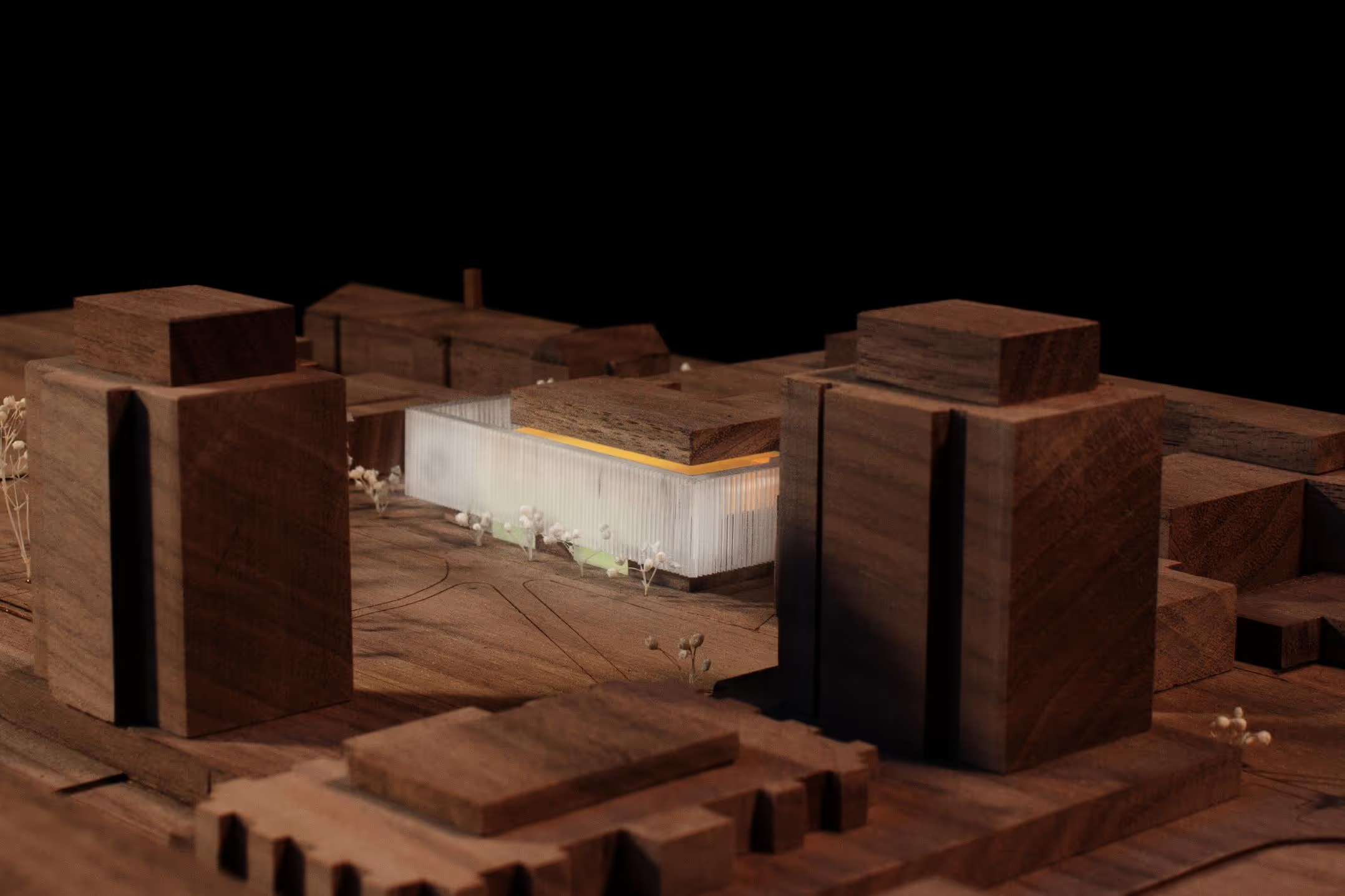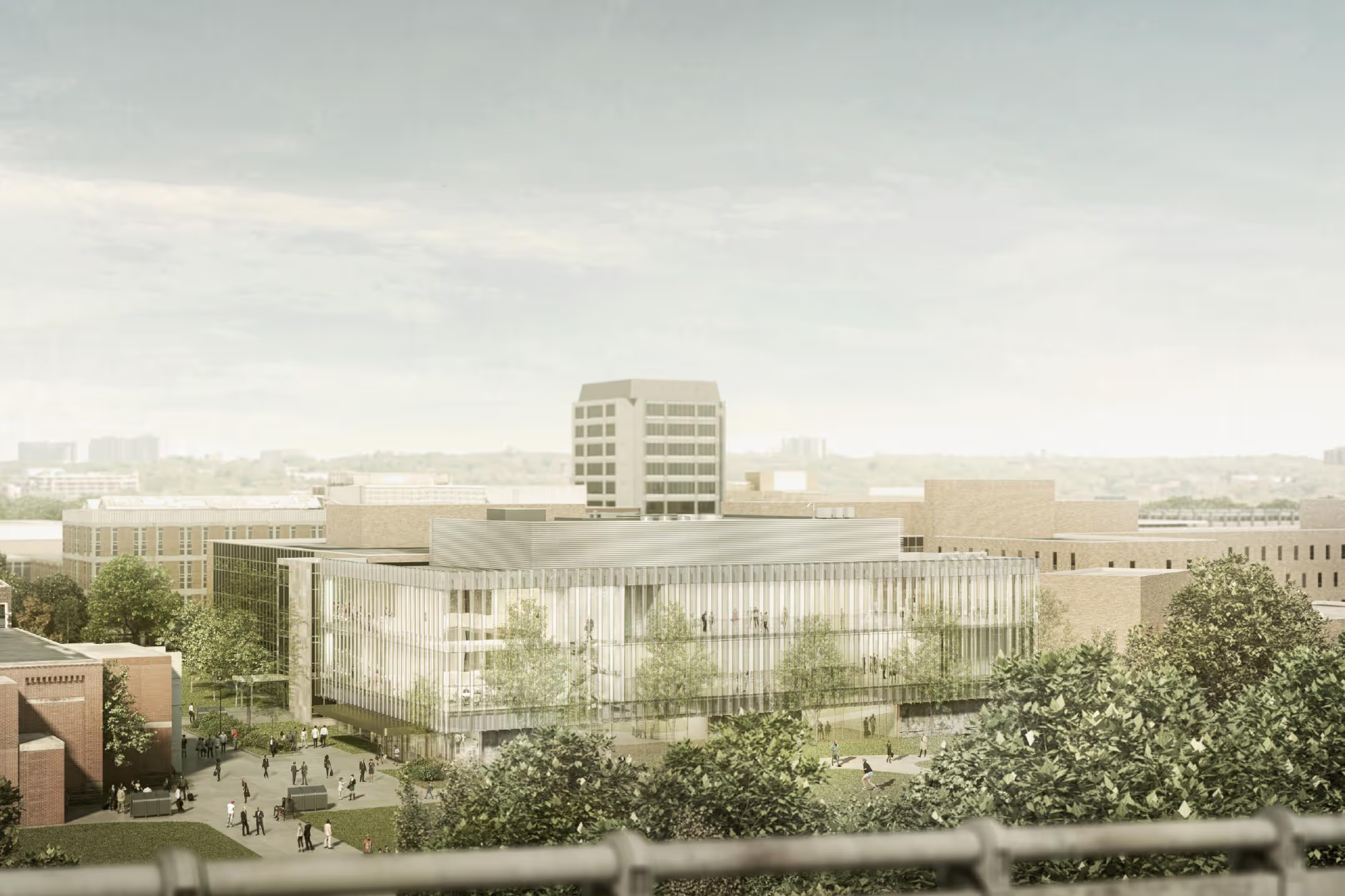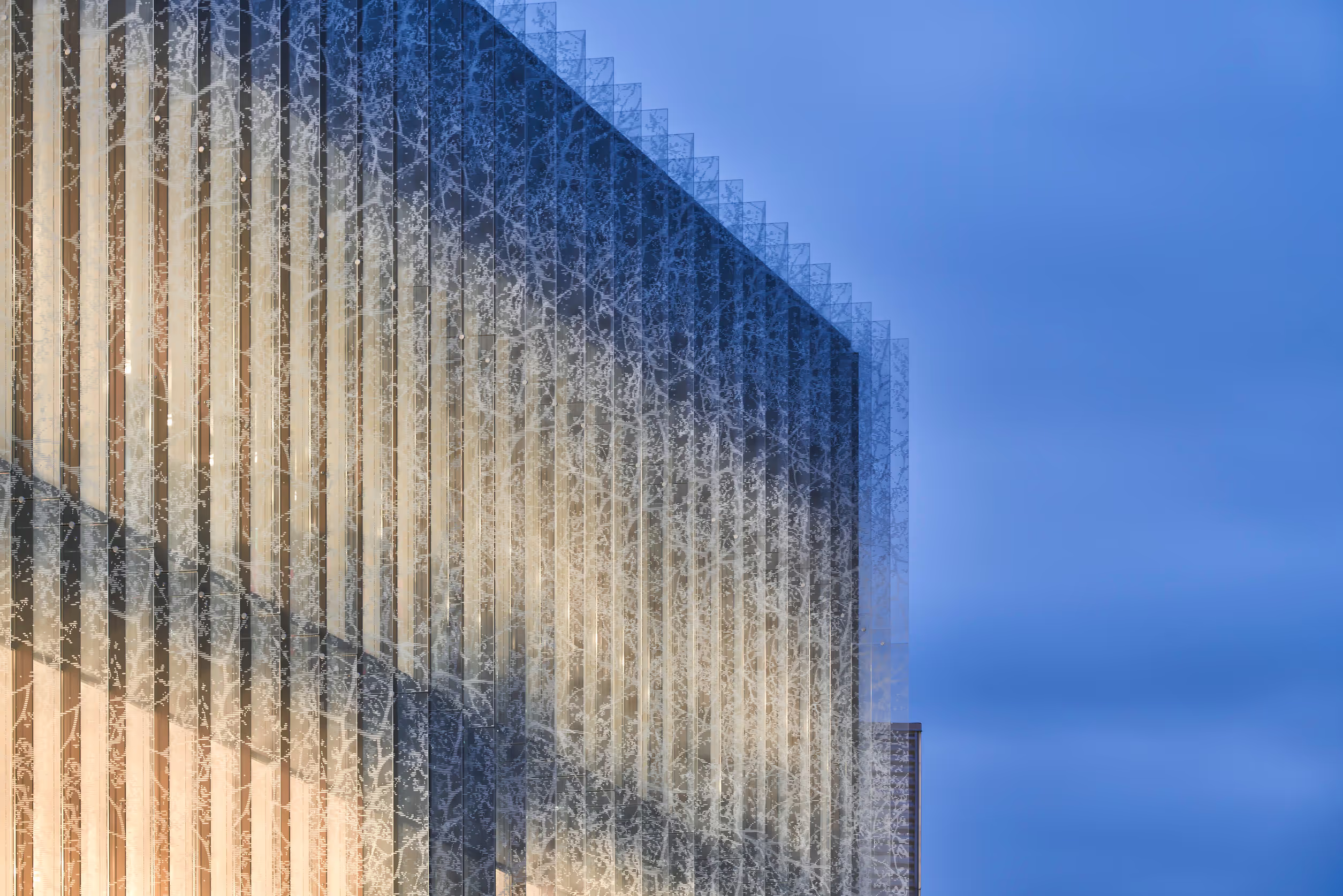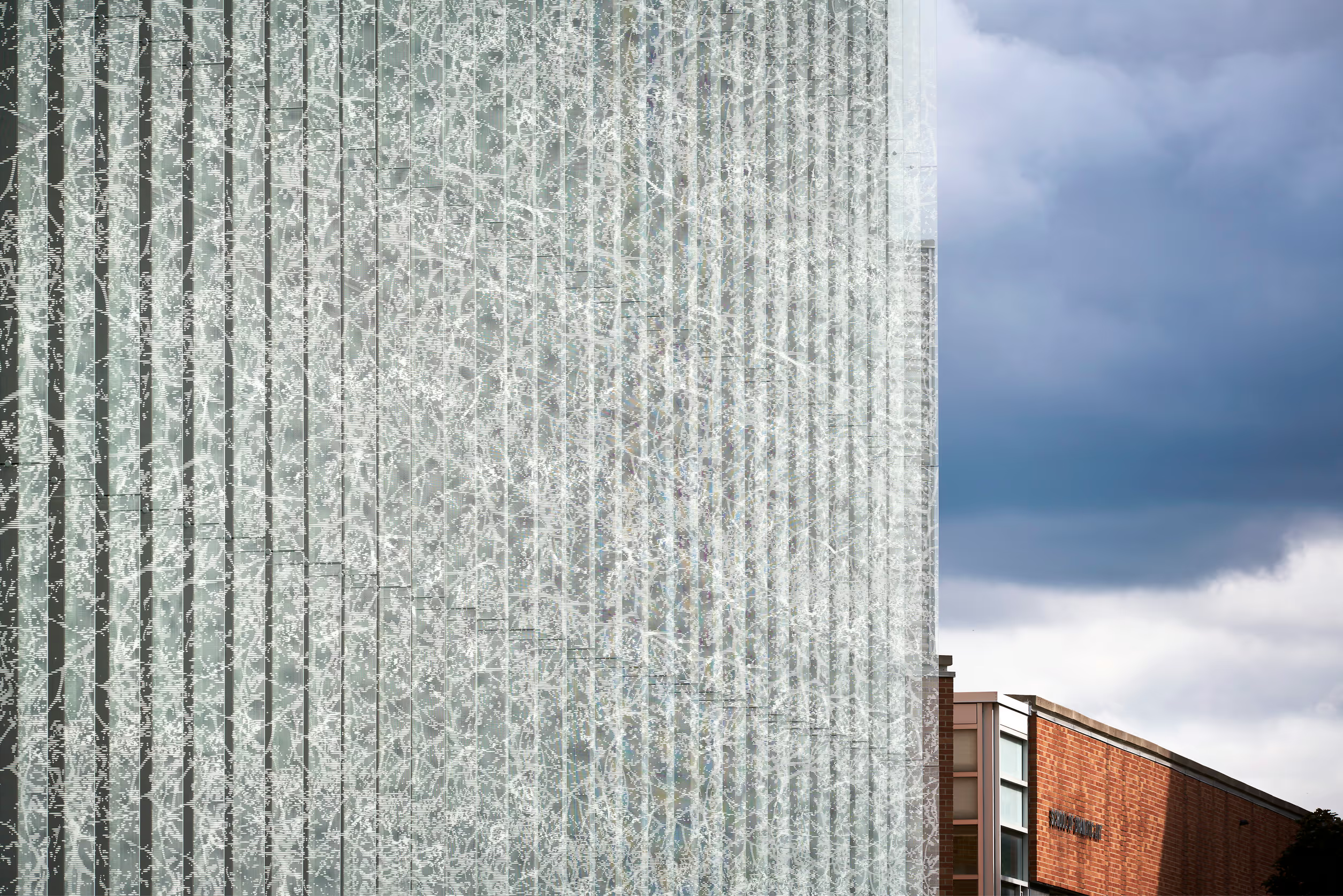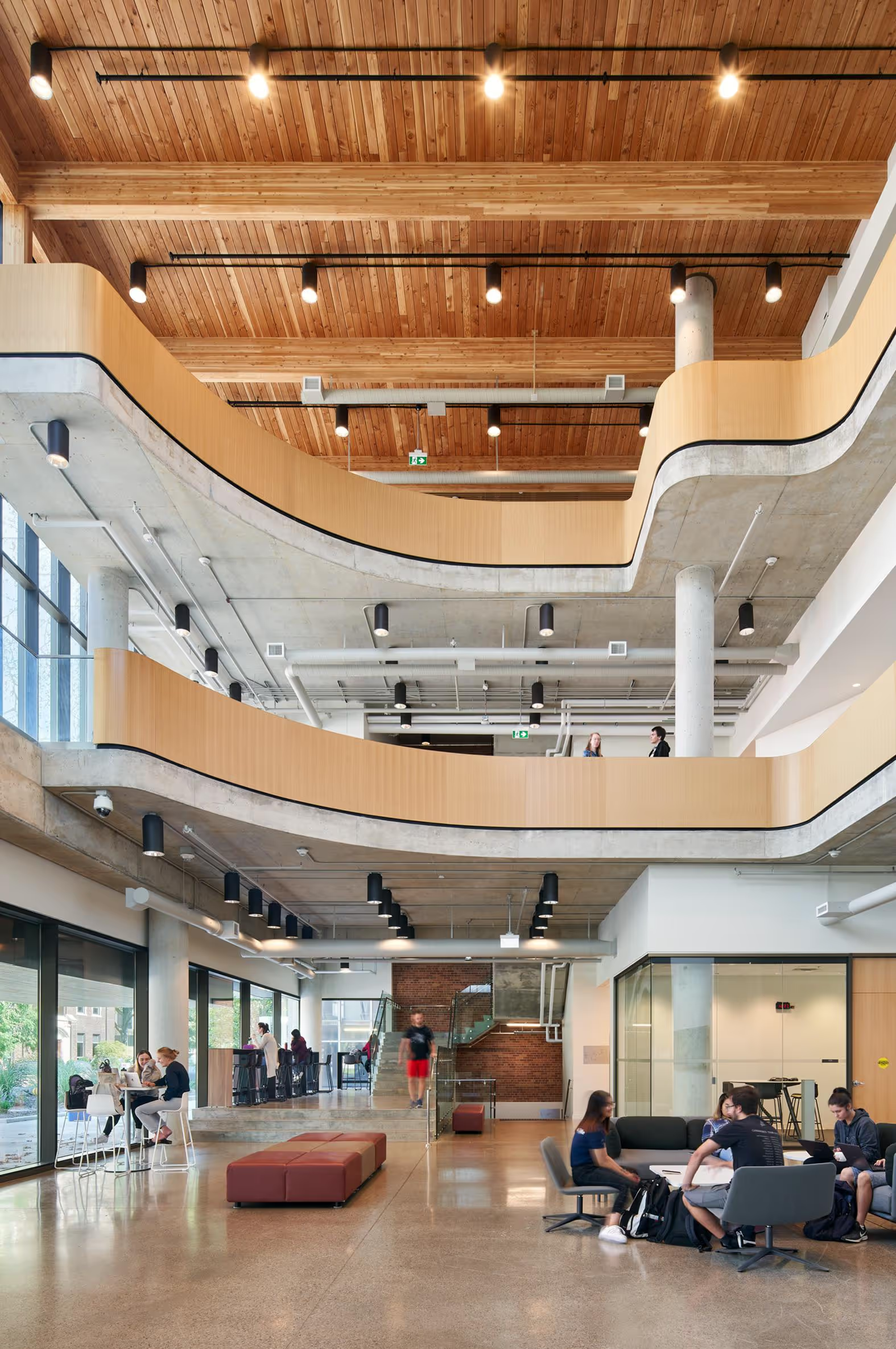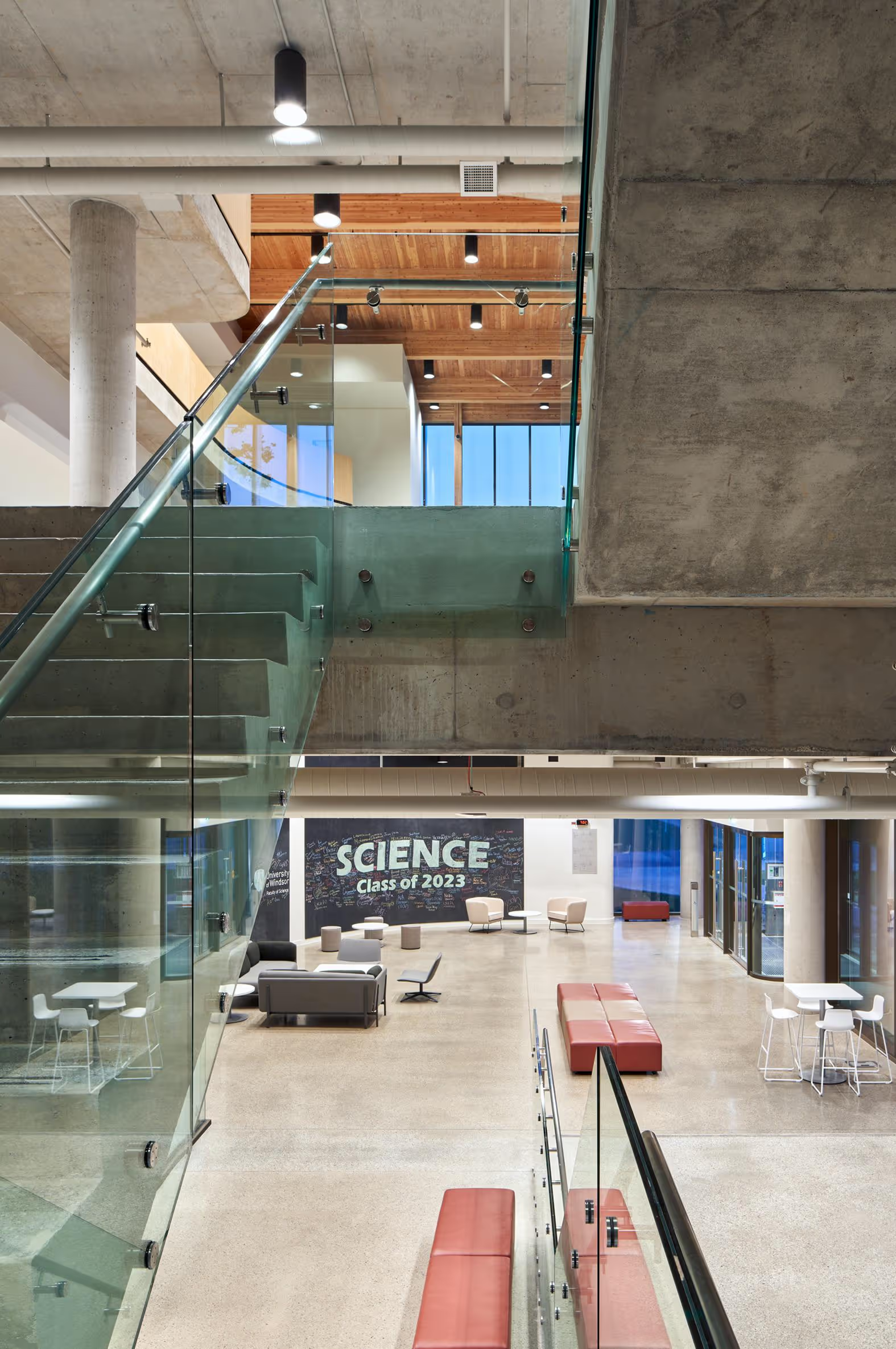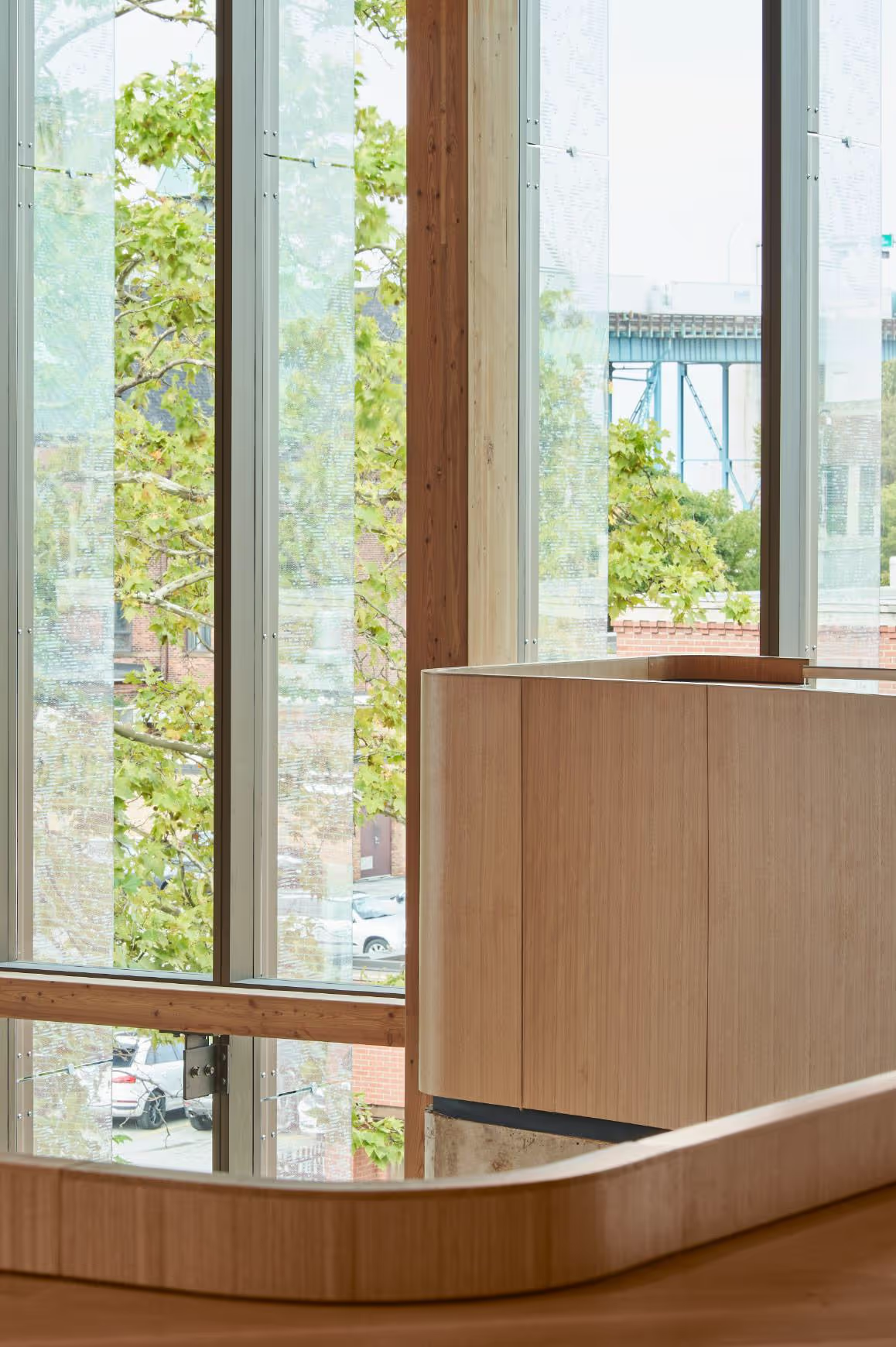The Essex Centre of Research (Essex CORe) is a crystalline showcase for flexible, functional and innovative research at the University of Windsor. Visible from the campus to the east and the Ambassador Bridge to the west, the building appears as a floating beacon of the creativity and innovation happening within with floor-to-ceiling glazing providing direct views into meeting and research spaces. The custom-fritted glass fins feature vertical patterns inspired by nature create a shimmering effect, making Essex CORe stand out as an attractor.
The design was inspired by the desire to merge the dense work of science with the welcoming, collegiate and natural environment of the University. Lab spaces are designed to feature large highly functional, unobstructed floor plates to create flexible and open working areas. The design goes further to merge with research labs, and is a creative place where industry and academia work together. Immersed in a unifying gesture and architectural expression, ‘lab’ and ‘collab’ exist together to create the required synergy for scientific research.
Team
2020 – Ontario Association of Architects, Design Excellence Award
2020 – Ontario Association of Architects, People's Choice Award




